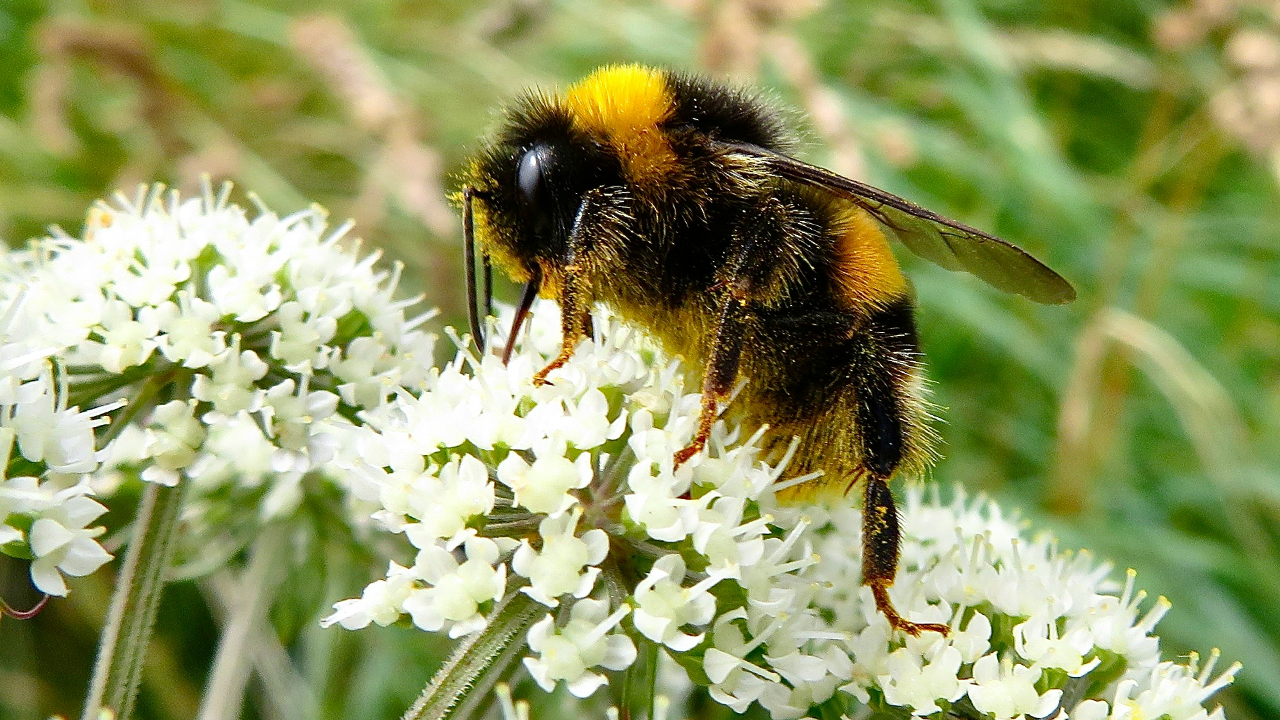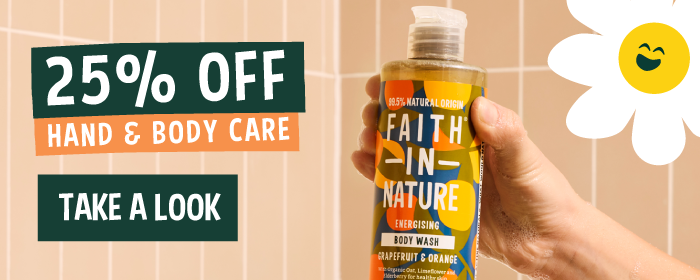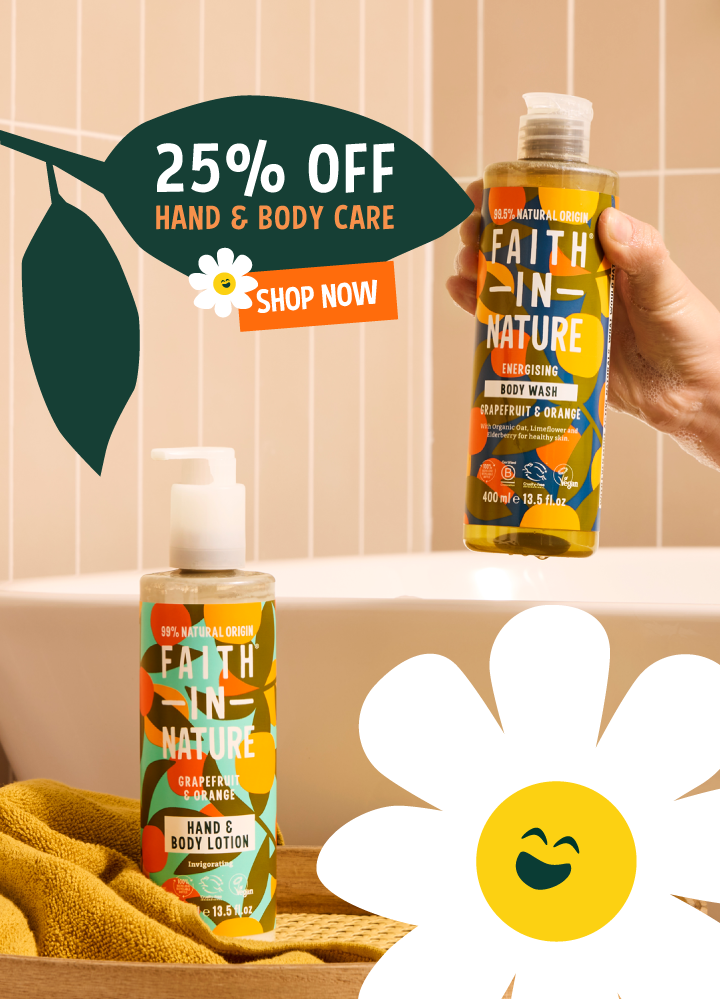
20, May 2025
Save the Bees! Protecting our Precious Pollinators
We believe in the bees! They're vital to our ecosystem and the food we eat, but they’re also in danger. So, why are bees so important? And how can we help them? From growing bee-friendly plants to recording bee sightings, there are plenty of ways to help save the bees.
WHY ARE BEES IMPORTANT?

Bees pollinate lots of trees and plants, including 1 in every 3 mouthfuls of the food we eat. Without them, many crops simply wouldn’t reproduce. It’s estimated that UK farmers alone would need to spend £1.8 billion a year on manually pollinating crops without bees’ help.
Bees also play a vital role in biodiversity and are crucial part of the food chain, so other animals would be affected if they weren’t around.
Also, bees are amazing, clever creatures capable of building incredible nests and communicating via dance – scientists have even trained them to play football! And bees are beautiful – who doesn’t love listening to them buzz around the flowers on a sunny day?!
ARE BEES ENDANGERED?
 The great yellow bumblebee is one of the UK bee species at risk of extinction. Great Yellow Bumblebee. Bombus distinguendus (52155571998) by gailhampshire is licensed under CC BY 2.0.
The great yellow bumblebee is one of the UK bee species at risk of extinction. Great Yellow Bumblebee. Bombus distinguendus (52155571998) by gailhampshire is licensed under CC BY 2.0.
Yes, sadly, several species of bee are endangered. In the UK, 13 species have vanished since 1900 and 35 more are under threat of extinction. In 2024, numbers of UK bumble bees fell to the lowest ever recorded.
Bumblebees and solitary bees (‘wild bees’) are more at risk than their honey-making cousins. Although honeybees are impacted by the same factors that endanger wild bees, they’re usually managed by beekeepers – so can be treated for diseases and kept in areas with plentiful food. Honeybees also feed from a wider range of flowers than wild bees, meaning they’re less likely to go hungry.
WHY ARE BEES ENDANGERED?
Swathes of the habitat needed by bees for food and shelter has been lost to intensive farming and building developments. In the last 60 years, a shocking 97% of UK wildflower meadows have disappeared.
Other risk factors for bees include climate change (which affects their breeding habits and availability of food), toxic pesticides and invasive species like Asian hornets.
HOW CAN WE HELP BEES?

So, bees clearly need a hand, but how can we help them? Thankfully, there are plenty of ways to support these precious pollinators...
BEE FRIENDLY PLANTS AND GARDENING
Make a bee buffet! If you’re lucky enough to have an outdoor space, fill it with native, flowering plants that will provide all-important pollen and nectar for bees. You don’t need a big garden – an urban balcony can make a great bee oasis. Read our guide: 10 of the Best Flowers to Plant for Bees.
Avoid pesticides or weedkillers (even those labelled ‘bee safe’ can be harmful). Pull up weeds – or better still, leave them alone. A ‘wild’ corner of a garden can provide a biodiverse habitat for bees and other creatures. Let bee favourites that are often considered weeds, like dandelion and clover, grow. Overgrown areas, compost heaps and patches of bare soil can all provide nesting sites for wild bees. Take part in No Mow May, an initiative to let lawns grow wild for pollinators in May (and beyond!).
BEE HOTELS

Bee hotels can provide a safe place for some species of endangered solitary bees to lay their eggs. Clusters of mini ‘tunnels’ of natural materials make perfect egg-laying locations. Buy a pre-made bee hotel, or enjoy the satisfaction of building your own. Hang your hotel in a dry, south-facing spot and wait for the bees to check in!
DO BEES DRINK WATER?

Yes! So, if you’re providing them with flowers, it’s only fair to give them a drink too – especially in hot weather. Place pebbles in a shallow dish, bird bath or pond to give bees a safe platform to sit on while they sip.
SUGAR WATER FOR BEES
Sugar water can be used to revive tired bees (see below) but it should never be left out as bee feed. It has little nutritional value and can affect honey quality and discourage bees from feeding from flowers. Likewise, you should never feed a bee honey (it can spread diseases).
HOW TO SAVE A BEE
It’s hard work being a bee, which is why you’ll often see them having a rest. If they’re on a road or footpath, gently scoop them up using a leaf and place them on a flower, protecting your hands from their stinger.
It’s normal for bees to rest for about half an hour, so if you know one has been at rest for longer and it seems like it’s struggling, you can try to revive it with sugar water.
Offer the bee a mix of two parts white sugar with one part water, on a spoon or in a tiny container like a bottle lid. It might just give the bee the energy it needs to get back to where it needs to be. You can even buy bee revival kits with a tiny vial of sugar water on a keyring, for whenever you need to save a bee on the go!
BE A CITIZEN SCIENTIST

Help scientists understand more about the state of UK bees by taking part in a citizen science project. As well as helping bees, you’ll get to enjoy the benefits of connecting with Nature!
Download the Spot-a-Bee app to document the plants you spot bees visiting. Help scientists at Cardiff University and the University of Glasgow with their research into which plants are most important to bees.
Join over 800 volunteers supporting the work of the Bumblebee Conservation Trust by registering to be a ‘BeeWalker’. You’ll take regular, short walks on a fixed route,
Get involved with the UK Pollintor Monitoring Scheme (PoMS) to help monitor the changing populations of all kinds of pollinators, including bees. Commit to a quick, 10-minute count, or adopt a patch of land and conduct a deep survey!
Subscribe to the Bees, Wasps & Ants Recording Society (BWARS) (£20 a year) to help them gather important data about bees and other insects in the UK. Members are invited to field trips, workshops and webinars and receive a useful guidebook and a twice-yearly newsletter.



